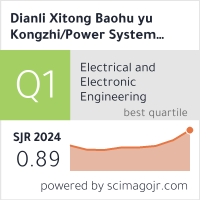IDENTIFICATION OF GREY SPOT FOR ACCIDENT PREVENTION THROUGH ROAD SAFETY AUDIT
Keywords:
Grey Spot, Black Spot, Road Safety Audit.Abstract
In order to bridge the gap created by conventional reactive black spot analysis, this study explores the proactive identification of "grey spots" through Road Safety Audit (RSA) as a contemporary method to accident prevention. Grey spots are possible high-risk locations that have not yet achieved critical accident thresholds but exhibit signs of safety concerns, whereas black spots are determined by historical accident data. The study starts with a review of the literature that identifies grey spots as a crucial idea for improving road safety and draws attention to the shortcomings of black spot techniques. An 11.8-kilometer stretch from Waghodia Bridge to Parul University in Vadodara, a busy two-lane road with significant pedestrian and vehicle traffic that serves schools, colleges, and hospitals, is the subject of the chosen case study. The study used a qualitative methodology that included field observations, photographic recording, and RSA checklists because police accident data was scarce. A number of "grey spots" were found, such as places with non-functional traffic lights at the intersection, Inadequate street illumination, poor street illumination and intense headlights glare, uncontrolled traffic flow and drainage problems. Every grey site was evaluated for risk and given a matching recommendation based on Indian Road Congress (IRC) guidelines. The conversation highlights how these high-risk locations are likely to turn into black patches and cause avoidable mishaps if left unchecked. The study concludes that proactive measures, such as improved signage, lighting, pedestrian infrastructure, and traffic control, can significantly enhance road safety. The main output of the research is a structured identification and classification of grey spots, providing a replicable model for future audits. However, a key limitation was the absence of official accident records, which restricted the quantitative validation of findings. The study recommends incorporating alternative data sources for a more robust analysis in future research.





